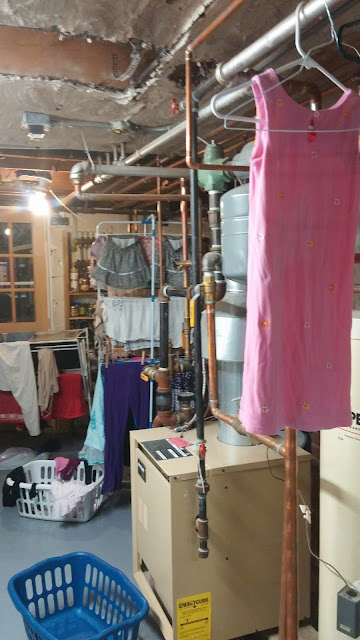I have blogged about hang-drying laundry before but that was in summer. I am often asked "but what about winter?" Which reminded me to write about wintertime laundry hanging. To summarize my general attitude: hang-drying laundry is really a very effective way to lower your carbon footprint, see for example the data in this article. If you're intimidated by the labor - consider just hanging large items such as towels, that use up a ton of energy to dry, but are quick to hang up. I will admit to drying socks, drawers and the piles of kitchen rags we use in the dryer in the winter, because they are just so tedious and space-consuming to hang up little by little. But yes, I do hang-dry the vast majority of our family's laundry every week, throughout the year.
As a matter of fact, my laundry dries at warp speed in winter: I hang it right next to our gas-fueled furnace, on several folding laundry racks, my favorite one being this one. The water pipes make excellent places to hang clothes hangers, too. Drying laundry this way has a carbon footprint, yes, but consider this: The current wisdom for insulating your hone is to insulate the leakage of hot air to the attic and that of cold air entering the house, typically around the perimeter of the foundation where it meets the framing. BTW I learned this during our energy audit and if you haven't had one done, you're missing out!
But back to the laundry. Since the insulation envelope includes the basement, the laundry doesn't create much of an extra heating load, it dries in they super dry winter air and makes us all breathe a little easier by gently humidifying the indoor climate. Win win!



No comments:
Post a Comment